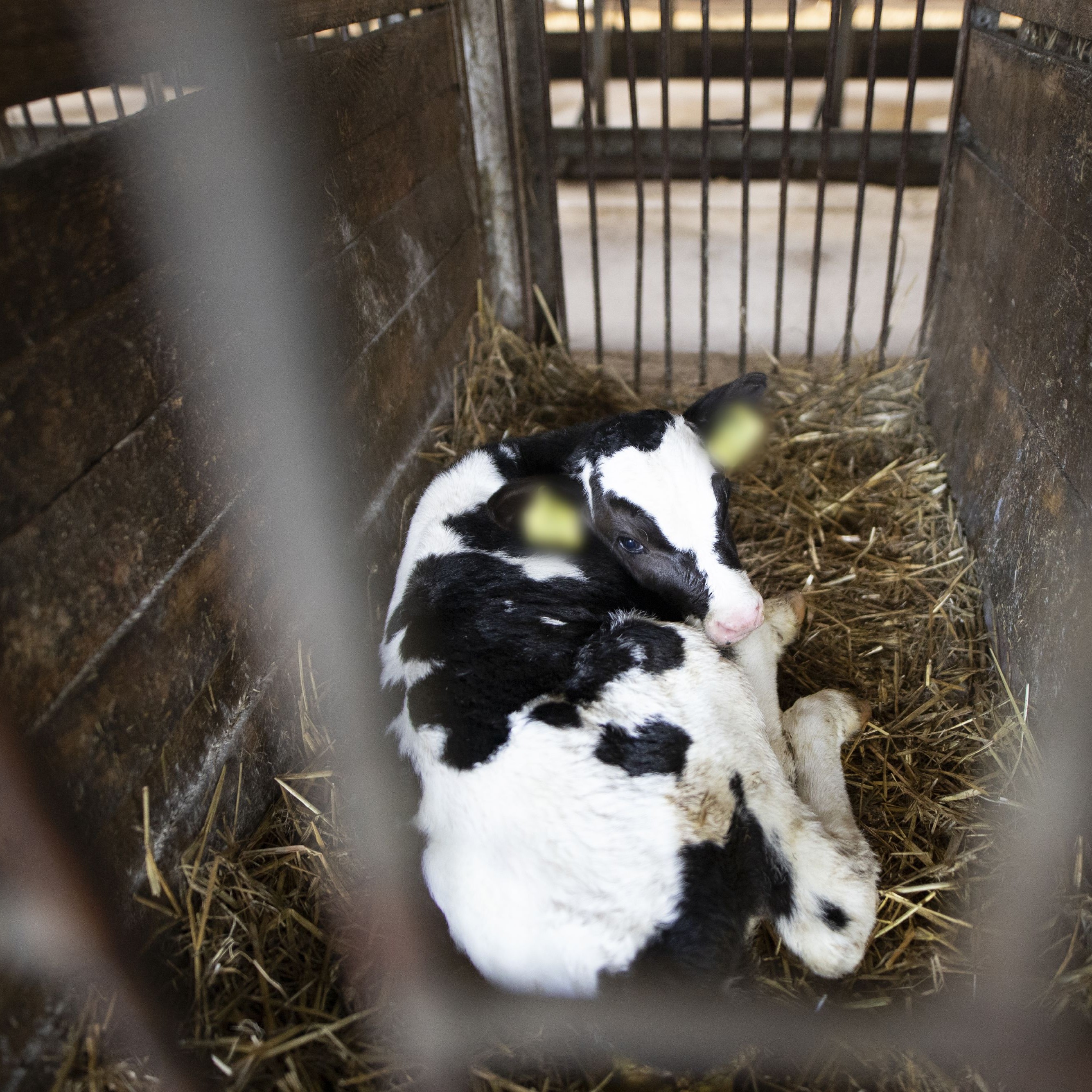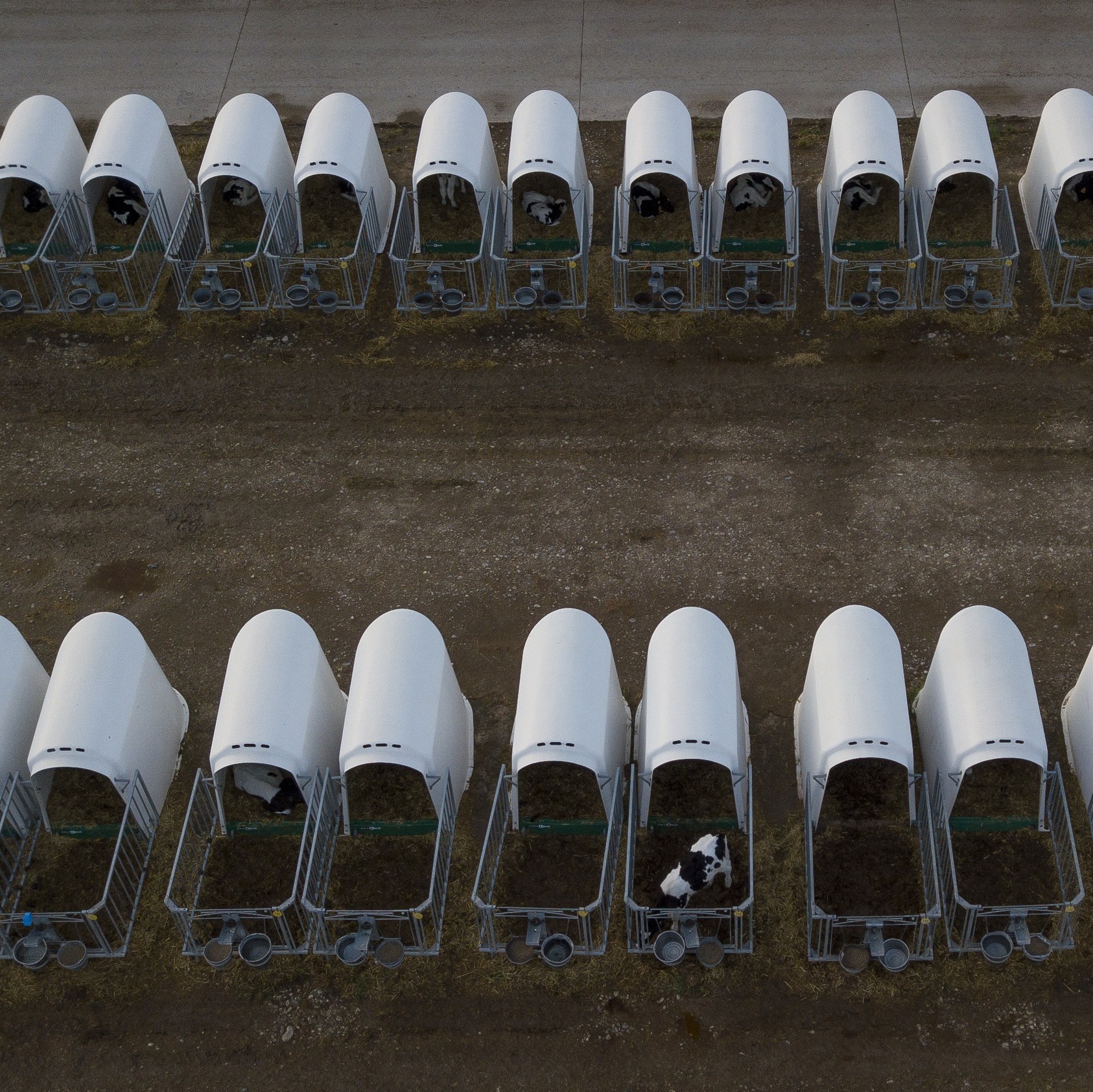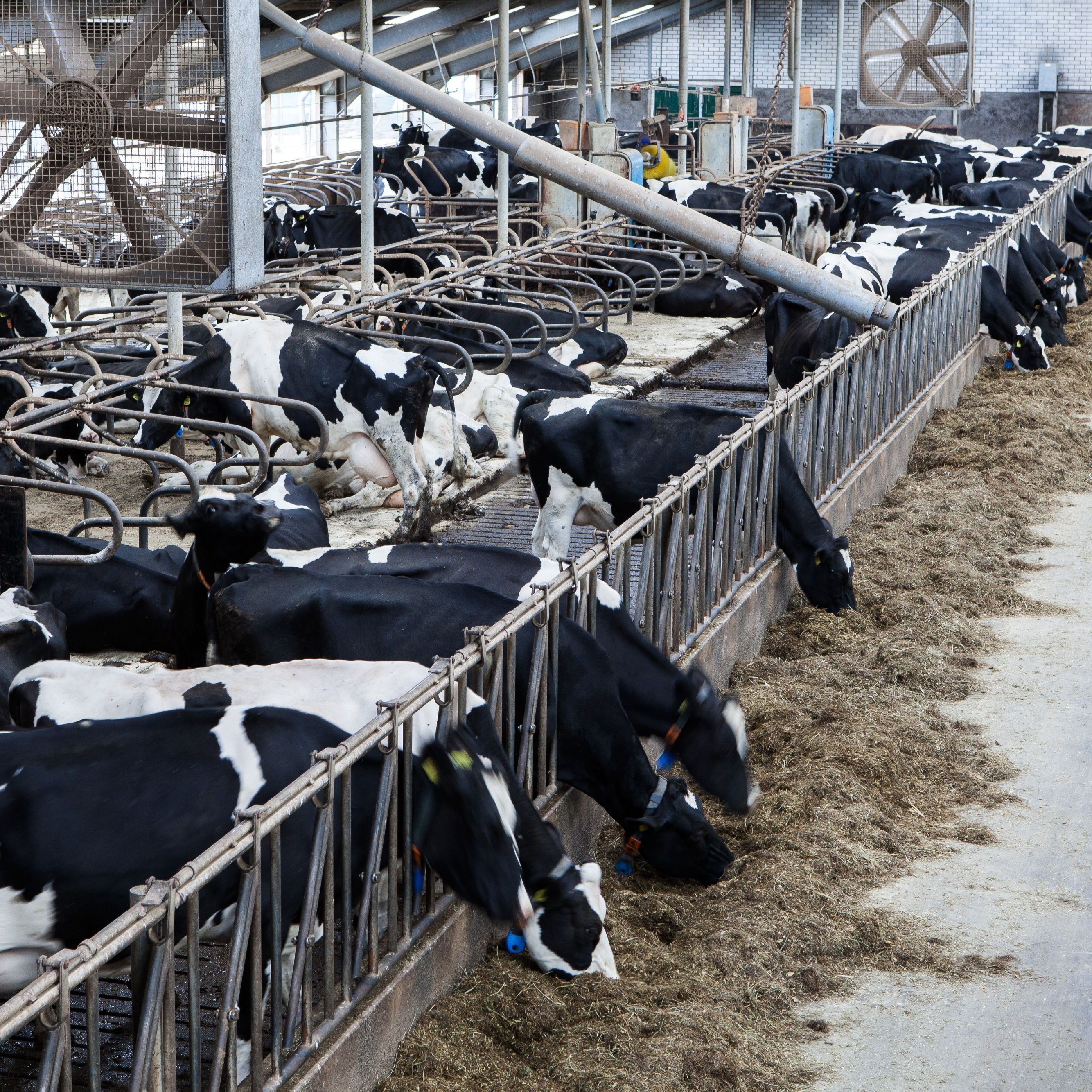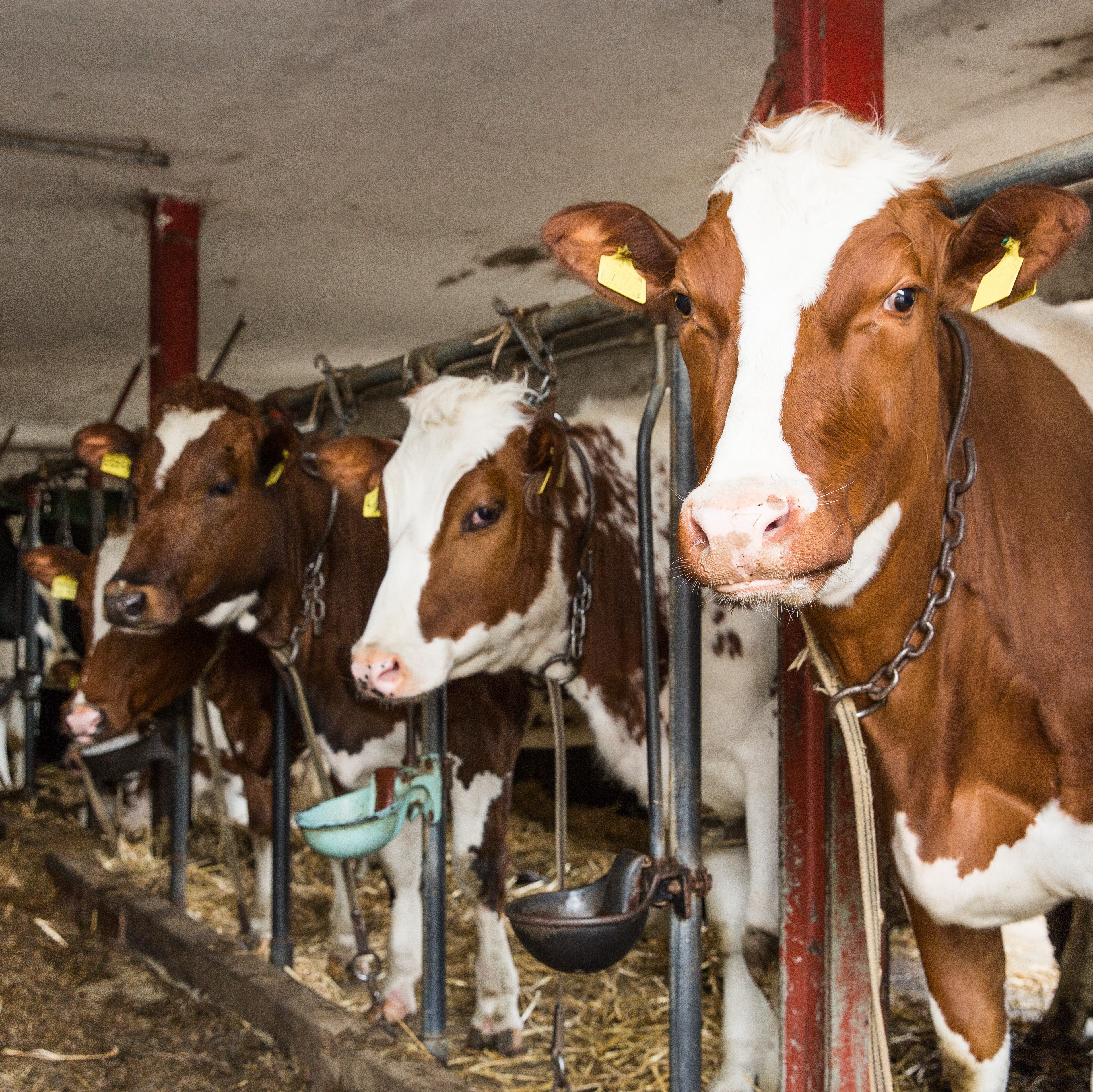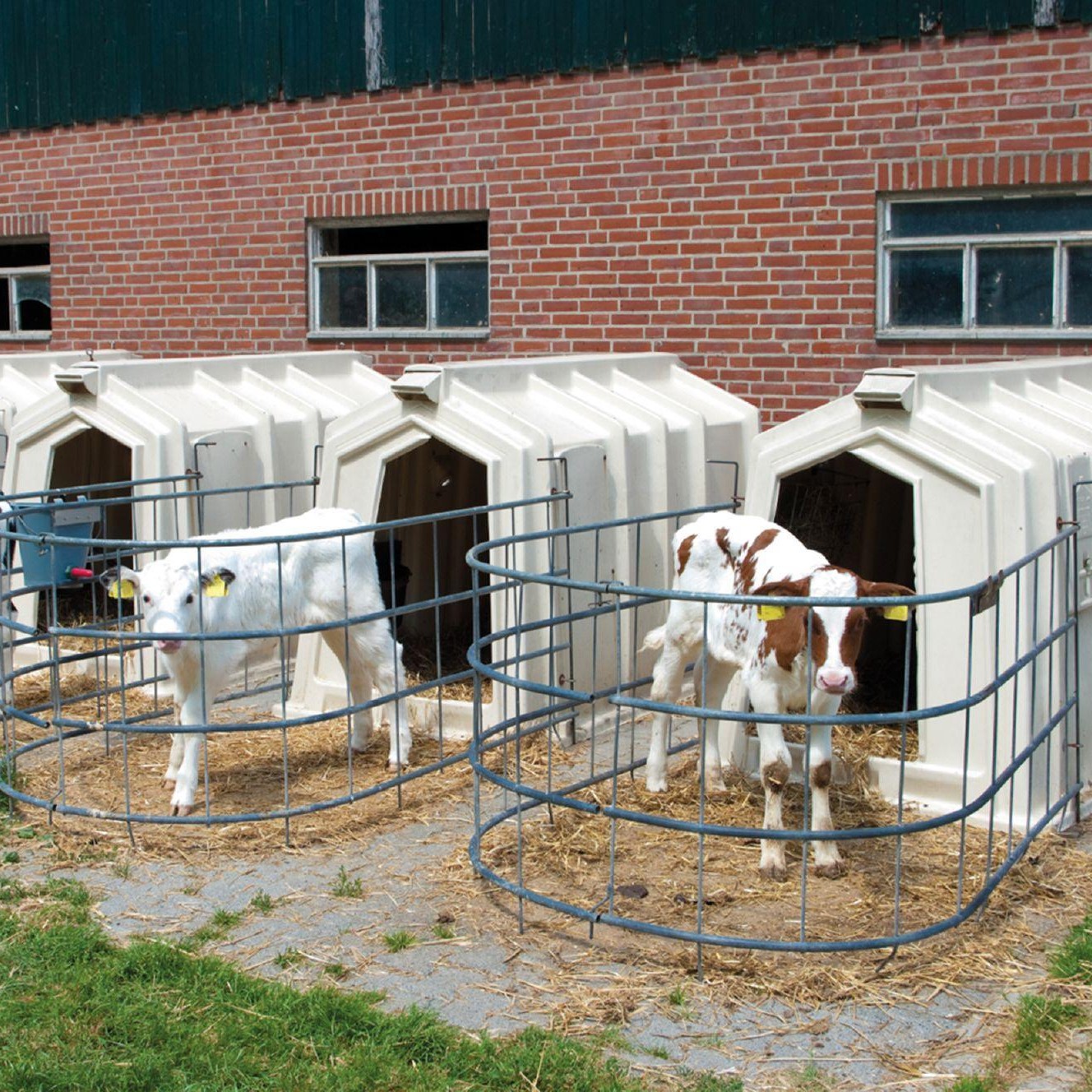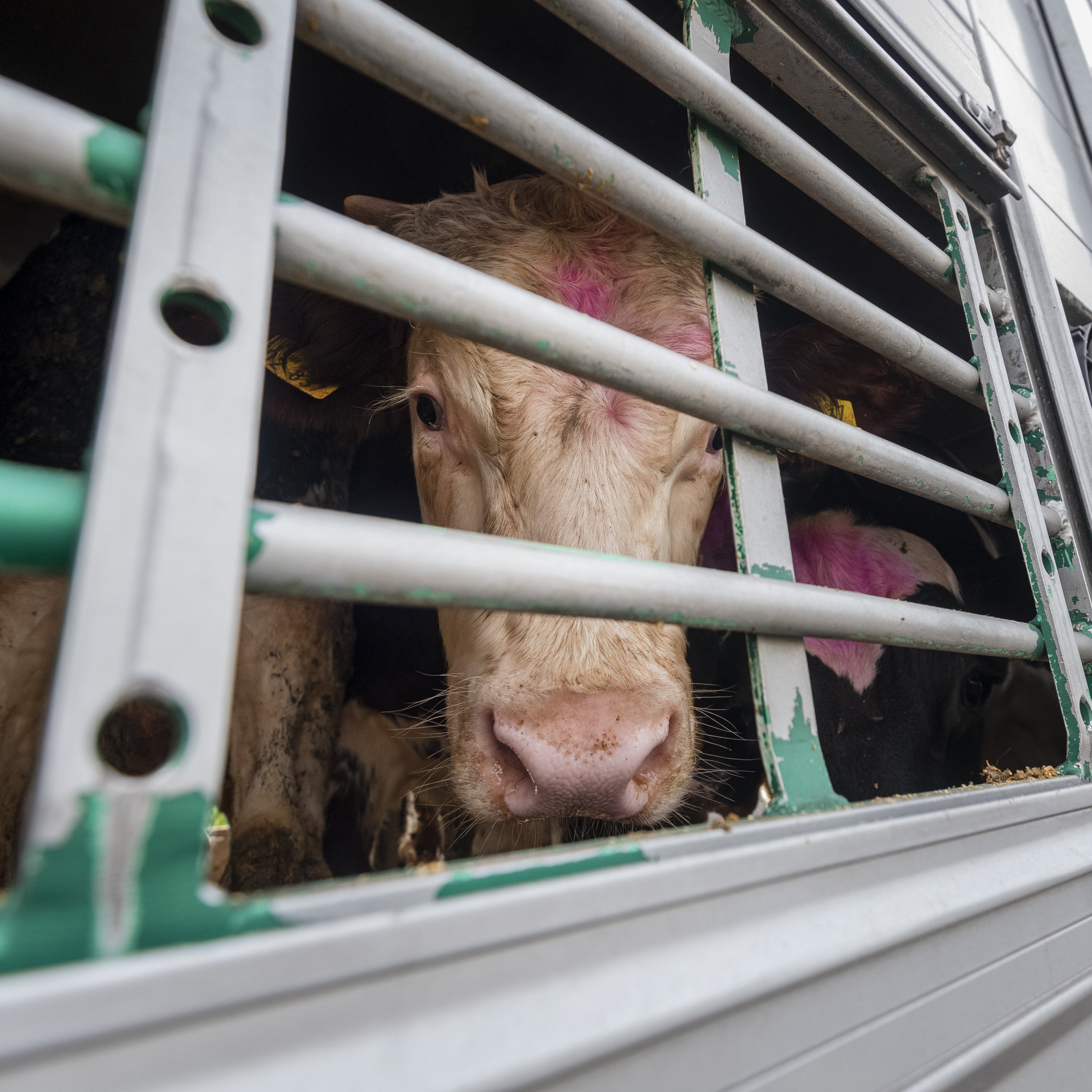
THE mutilation of cattle
Painful interventions are carried out on cattle without anaesthesia
This chart shows the painful operations cattle are subject to in intensive livestock farming.

Separation of Calf and Mother
Fully Slatted Flooring
Live Animal Transport
Breeding for Extreme Performance
Mutilations
Concentrate Feeding
Tethering of the Animals
Young Animals Kept in Isolation









1
2
3
4
5
6
7
8








dehorning
- Purpose: to prevent animals injuring each other or staff in a restricted space.
- The horn buds are burnt out. Because the horn buds are rich in nerves, dehorning is very painful.
tail docking (with elastic bands)
- Purpose for dairy cows: to prevent the milker being obstructed by a dirty tail during milking.
- Purpose for beef cattle: to avoid tail necrosis in animals housed in narrow stalls with fully slatted floors. Tail necrosis begins with changes to the skin at the end of the tail and damage to the tail. This can lead to inflammation which may move into the tail vertebrae and can spread to the spinal cord or into the limbs. When the inflamed area is not amputated in time, the animal must be killed.
- A rubber ban is tightly bound around the base of the tail, cutting off blood circulation and causing it to die. The procedure lasts for several weeks and is very painful for the animal.
- There are further methods of tail docking which are also carried out without anaesthesia (e.g. thermocautery).
branding
- Purpose: identification.
- A scorching iron inflicts high-degree burns to the skin. The animals show signs of pain for weeks.
ear tagging
- Purpose: identification.
- The ears are pierced to fix ear tags.
the castration of male animals without anaesthesia
- Purpose: to curb the fertility of male animals and make them less aggressive.
- The spermatic cords are strongly squeezed by a clamp (the Burdizzo clamp).
four paws demands
- No dehorning. If dehorning is carried out this must be done under anaesthesia and with follow-up treatment against pain through non-steroidal anti-inflammatory drugs (NSAIDs) administered by a vet.
- A general ban on tail docking. Appropriate farming methods do not require the amputation of body parts.
- Chipping cattle instead of compulsory ear tagging.
- The castration of male cattle must be carried out under sedation with a local anaesthetic administered by a vet and additional follow-up treatment against pain through non-steroidal anti-inflammatory drugs (NSAIDs).

